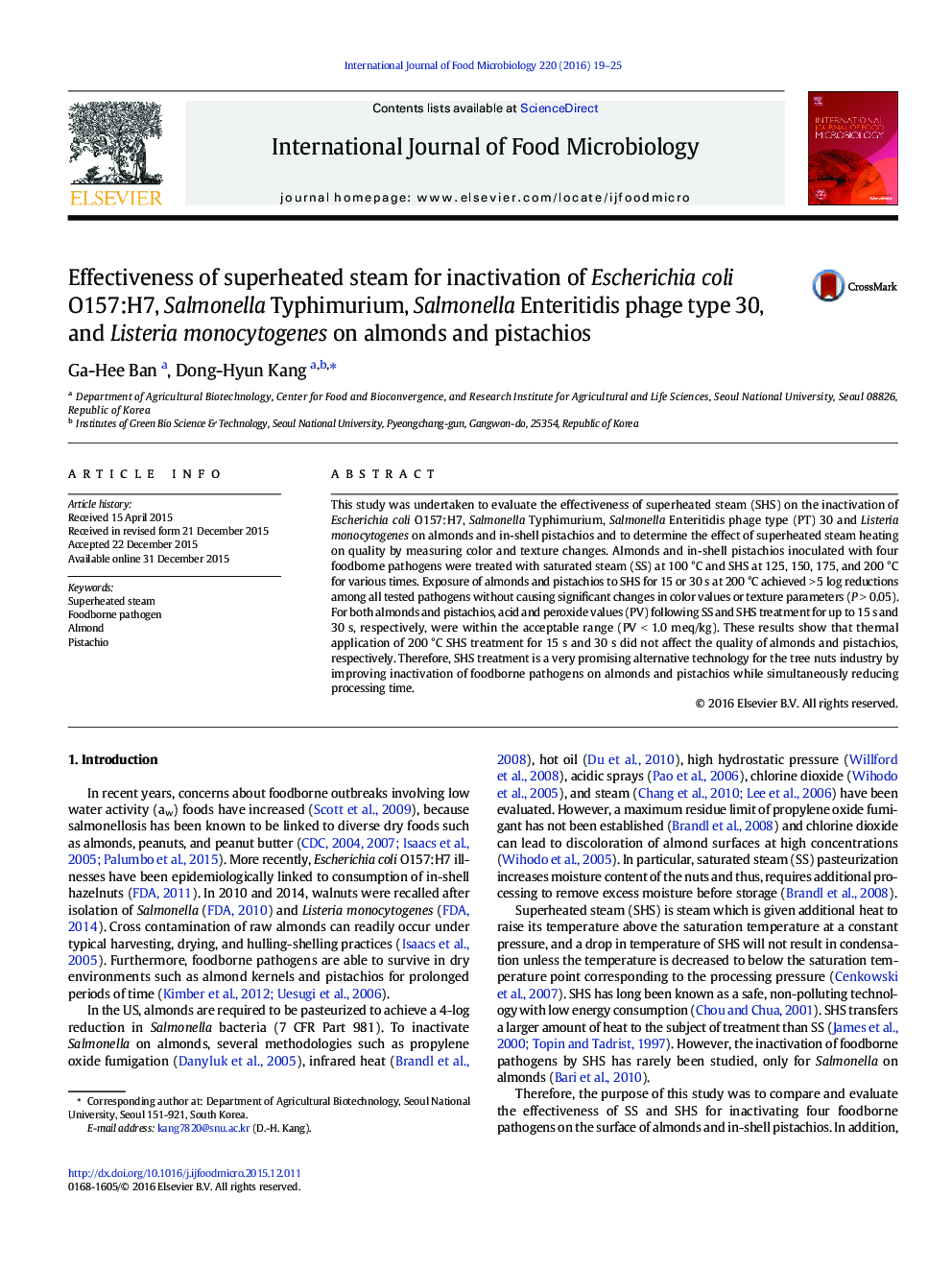| Article ID | Journal | Published Year | Pages | File Type |
|---|---|---|---|---|
| 4366323 | International Journal of Food Microbiology | 2016 | 7 Pages |
•Superheated steam was more effective at killing of pathogens than saturated steam.•SHS at 200 °C for 15 s attained > 5.8 log reduction for pathogens on almonds.•SHS at 200 °C for 30 s attained > 5.5 log reduction for pathogens on pistachios.•SHS treatment attained an additional 1.8–4.2 log reduction compared to SS.•200 °C SHS for 15 s and 30 s did not affect the quality of almonds and pistachios.
This study was undertaken to evaluate the effectiveness of superheated steam (SHS) on the inactivation of Escherichia coli O157:H7, Salmonella Typhimurium, Salmonella Enteritidis phage type (PT) 30 and Listeria monocytogenes on almonds and in-shell pistachios and to determine the effect of superheated steam heating on quality by measuring color and texture changes. Almonds and in-shell pistachios inoculated with four foodborne pathogens were treated with saturated steam (SS) at 100 °C and SHS at 125, 150, 175, and 200 °C for various times. Exposure of almonds and pistachios to SHS for 15 or 30 s at 200 °C achieved > 5 log reductions among all tested pathogens without causing significant changes in color values or texture parameters (P > 0.05). For both almonds and pistachios, acid and peroxide values (PV) following SS and SHS treatment for up to 15 s and 30 s, respectively, were within the acceptable range (PV < 1.0 meq/kg). These results show that thermal application of 200 °C SHS treatment for 15 s and 30 s did not affect the quality of almonds and pistachios, respectively. Therefore, SHS treatment is a very promising alternative technology for the tree nuts industry by improving inactivation of foodborne pathogens on almonds and pistachios while simultaneously reducing processing time.
